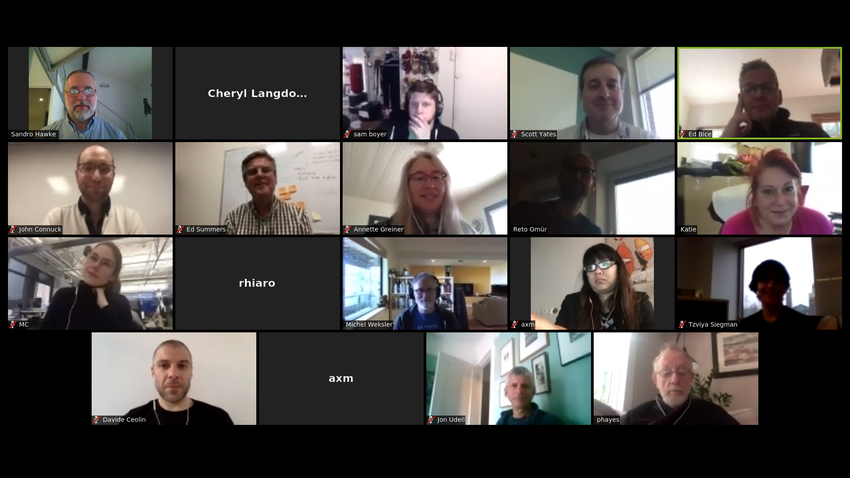A More Trustworthy Web?
Sandro Hawke, W3C Fellow
sandro@w3.org
For W3C AC Meeting
May 2018, Berlin
Credible Web CG

Timeline
- Formed fall 2017 by Credibility Coalition folks
- Initial meetings at TPAC
- Started regular meetings last month
- Nearing consensus on WG-like charter
- F2F meeting planned for July
Framing the Problem
Can we shift the Web to empower end users
in their ongoing efforts
to decide which web content is trustworthy
and to avoid being misled or deceived?
Incremental approach
- Establish common vocabularies (schemas)
- for sharing data on the web
- ... relevant to credibility assessment
- schema.org is accepted in news industry
- ... and some major platforms
What might folks share
that will help others know
what to trust?
Project Area 1: Inspection
Content and content providers may have observable features that indicate credibility. Can the CG identify these features and allow them to be annotated?
- example: "emotionally charged tone"
Annotation by: friends, volunteers, paid sources, AI
Usable by search, feed algorithms, UI
Risks:
- impact of false positives/negatives
- gameability arms race, like SEO
Early draft (from CredCo) at https://credweb.org/cciv
Project Area 2: Corroboration
Identify claims in content; check them against evidence
See: Int'l Fact-Checking Network, ClaimReview, RelatedFactChecks
- Input-Side (Helping Fact-Checkers)
- Collaborate on identifying checkable claims
- Share urgency/demand data
- Add context (time, geo) to claims
- Output-Side (Claim Review++)
- Expose provenance
- Cross-link to increase trust
- Convey more nuance/detail
Project Area 3: Reputation
Help people maintain and use their trust networks
- Better human/machine collaboration around trust
- Allow end-users to use their preferred trust networks
- Help users track quality of sources
- Bootstrap from: contacts? followers? co-authoring?
Risks:
- asymmetry: humans see negative info as more salient
- coerced statements (eg need for secret ballot)
Vocab example: { <example.com> :domainCredibility 0.80 }
Project Area 4: Transparency
Help folks self-report data impacting credibility (in some context)
Examples: disclosing business model, investors, jurisdiction
- Publishers use structured markup in labeling themselves and their content, intended to highlight what makes them credible
- See https://theTrustProject.org/
Risks:
- by itself, can allow malicious folks to appear extra trustworthy
- burden for small sources
Getting started...
- Researchers (DFKI, MIT, Indiana, ...)
- Small vendors (Hypothes.is, Meedan, FactsMission, ...)
- News Media (AP/IPTC, BBC, ...)
- Search/NewsFeed Platforms (Google, Facebook, Bing, ...)
- Trust-related businesses (AirBnB, NIC.br, ...)
- Liaison (CredCo, Tech & Check, IEEE P7011, ...)
- Broader community
San Francisco meeting, end of July
More at https://credweb.org
These slides at http://hawke.org/talk-ac-2018
Bonus: What We're Not Doing
Out of scope 1
We won't be identifying "legitimate" content providers
We're not going to:
- decide who gets their content seen
- set standards for making that decision
- develop tech for whitelists/blacklists beyond end-user control
because:
- Political polarization would make consensus unlikely
- Even within a community, the lines are not clear
- Centralizes power, could turn into censorship
- Would likely diminish the smaller voices (anti-web)
Out of scope 2
We won't build an AI to decide what's trustworthy
Because:
- Unclear if it's possible without superhuman AI
- Imperfect systems might make folks even more vulnerable
but:
- Hybrid systems (humans in the loop) can be great
- AI-based personal tools (eg spam filters) are good
- We'll help ecosystem for the training data